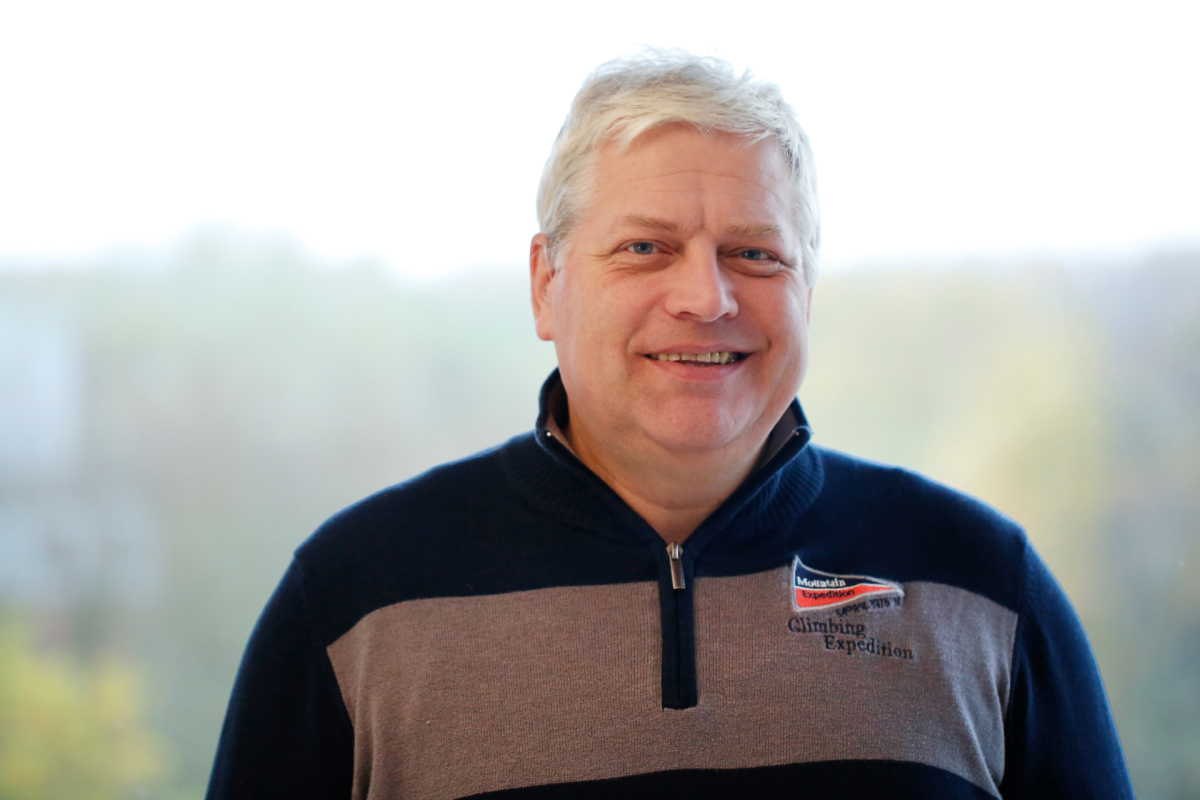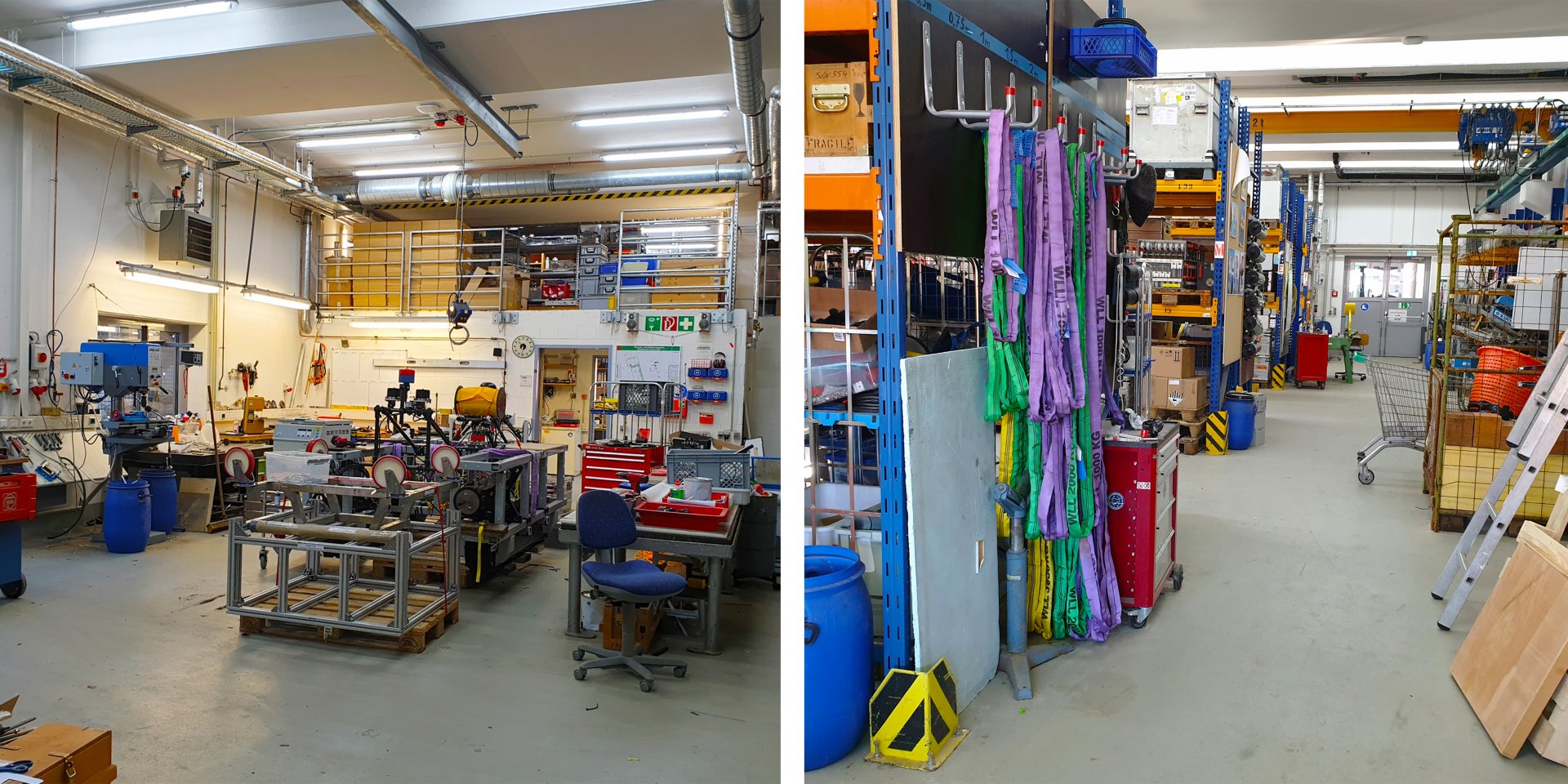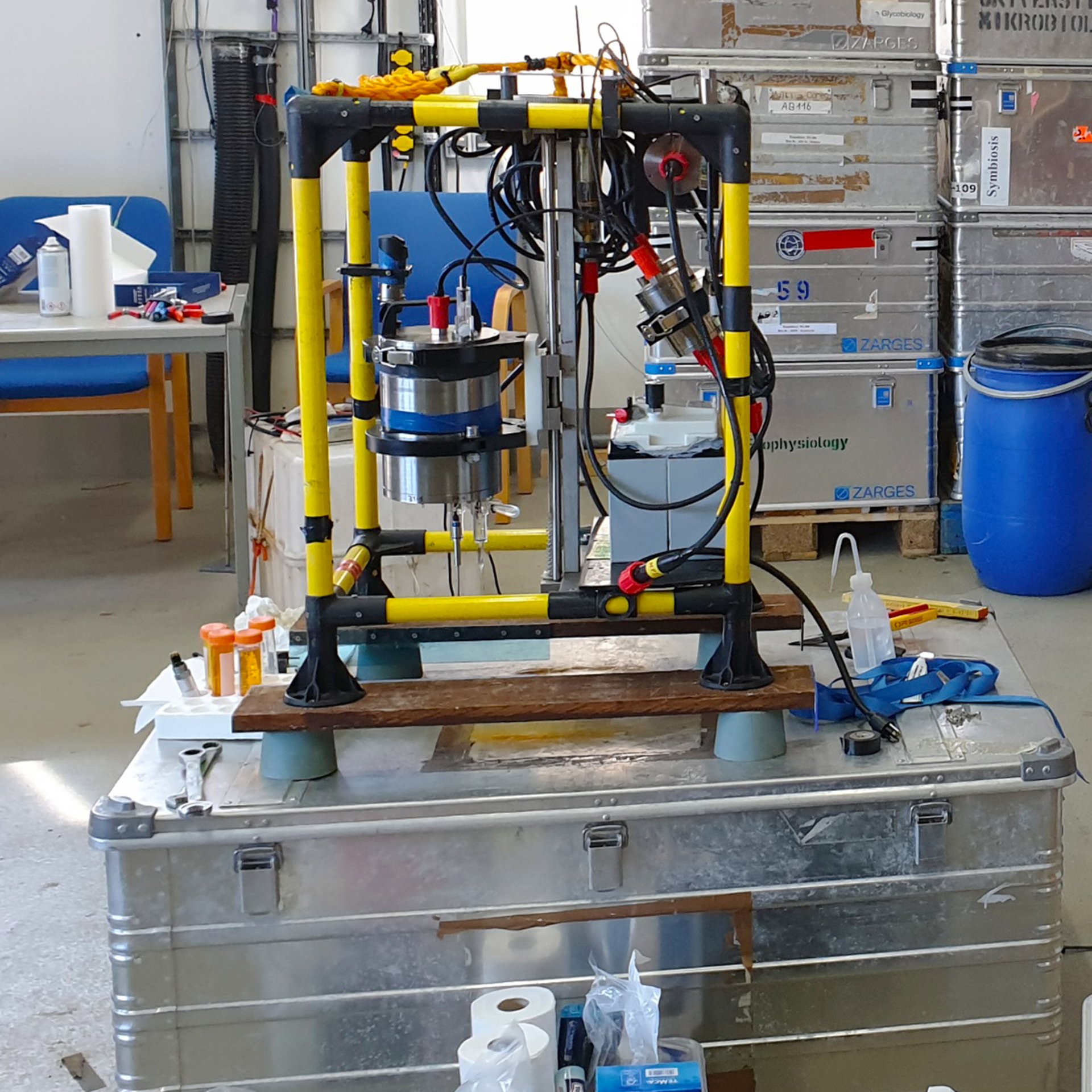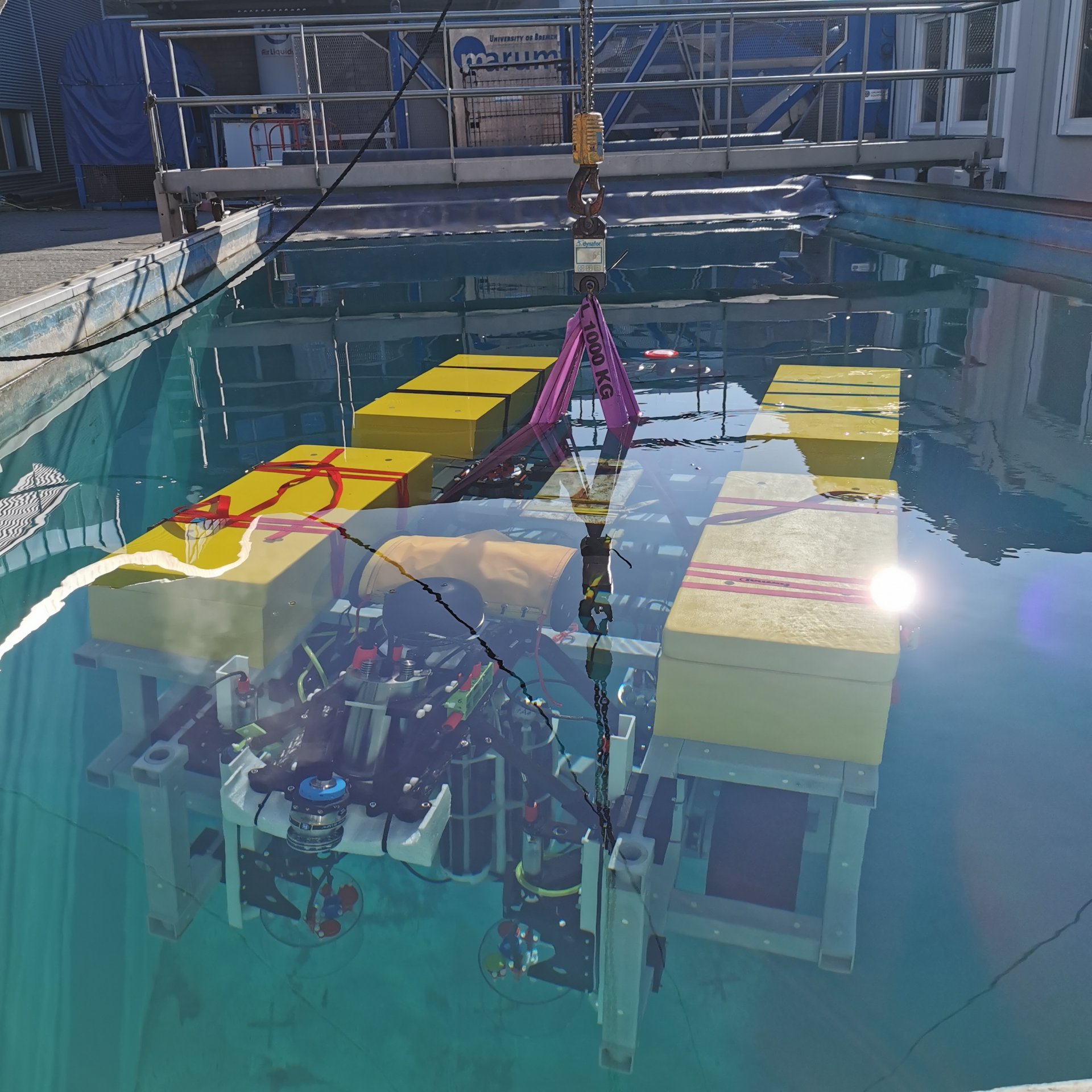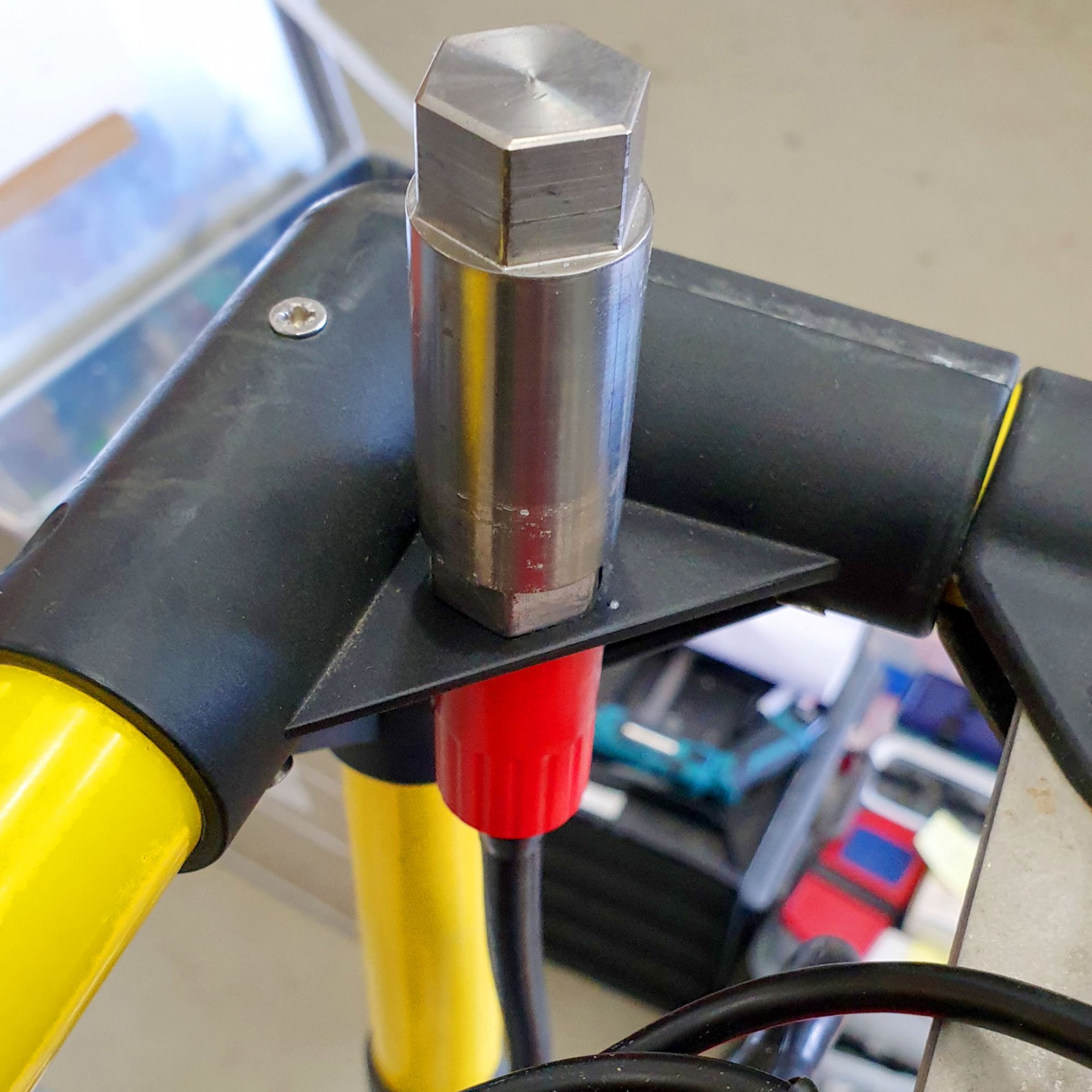Landerhalle
What is done in the Landerhalle?
The employees in the Landerhalle are responsible for research equipment used at sea. For example, they build research equipment that will be used from ships and carefully pack it so that it arrives at the ship undamaged. They regularly go on board themselves in order to support the scientists in using the research equipment. They also maintain the equipment that has returned from sea and prepare it for new expeditions.
The two employees in the Landerhalle often collaborate with the employees of the other two workshops at our Institute. They also work together with technicians from the Alfred Wegener Institute (AWI) or MARUM – Centre for Marine Environmental Sciences at the University of Bremen.
Incidentally, the name Landerhalle refers to chamber landers, which are carrier systems for the deep sea. These have been regularly converted, maintained, and further developed in the Landerhalle for sea missions since the construction of the Institute. Over the years, many new devices have been added – but the name has stuck.
Research equipment and expeditions
In general, it is rare for devices to be completely re-invented. In most cases, existing equipment is adapted in order to meet the specific needs of the researchers. To do this, the scientists contact the employees at the Landerhalle if, for example, they would like to deploy a benthic chamber and two profilers on a diving robot in the Arctic. In such a case, the employees of the Landerhalle check what equipment is already available and to what extent it can be used. For example, they check whether the light on the device is needed and functioning, whether the batteries are operational, and whether spare parts are needed as well as what needs to be added and/or optimized. In doing so, they make sure that the requirements of the researchers are implemented.
They mentally go through the use of the device and ensure that the necessary spare parts are available on the ship and can be readily exchanged. Once on board, the research equipment is prone to damage. For example, as a result of high waves and inclement weather. The equipment must therefor often remain on the seafloor longer than planned, thereby increasing the likelihood of defects. Particularly affected in this example are batteries that break. Other problems can occur if a device hits a stone or a component breaks off.
Because the employees of the Landerhalle are the experts for the devices, they also take care of the packing, the transport to the ship, and the return transport to the Institute. They play a key role in preparing the expeditions and usually go on board with complex equipment in order to prepare it for use and help the field researchers to deploy and later to retrieve it. This is quite important because when special equipment is involved, it is not always clear for example where ropes can be attached. An incorrectly fastened knot can quickly damage the device and jeopardize the entire operation.
Once the device is back on board, it is serviced, the batteries are recharged, and spare parts are fitted as required.
Practical examples
Example I: The new crawler
In close cooperation with the AWI, a new Crawler was developed and built in the Landerhalle in 2020/21. The goal is a device that can travel autonomously on the seafloor for a year and take samples. It is equipped with two benthic chambers and a host of profiler sensors that can continually change and take new measurements at different locations. These sensors measure values such as oxygen, temperature, and pH value.
For use on the seafloor, the Crawler is equipped with caterpillar tracks, which allow it to move slowly forward over the months. For sampling, it stops and remains stationary until sampling is completed. It then travels a bit further. This is important because a stationary device would influence the environment through its permanent presence in one place and thus falsify the data.
In the future, other units can be added to the Crawler. For example, a unit that regularly takes small core samples and stores them until the device is brought up is being considered. The Crawler is therefore significantly larger than the Tramper, for example.
Example II: Underwater switch
The motors that control the equipment on carrier systems must be switched on in the sea on site. There are switching systems that can be purchased. However, these are quite expensive. Because they are used frequently, an employee at the Landerhalle came up with a much more cost-effective solution. He built a reed switch into a small titanium shell. A reed switch consists of two metallic contact ends that are fused into a glass tube; this can be activated by a magnet. Thanks to this solution, which works with a magnet, there are no electronic components that need to be protected from water and high pressure.
To activate it, a small magnet is guided to the switch by the diving robot that brought the device to the seafloor. The metall ends inside the shell react and pass on the impulse via a cable so that the motors start and the measurements – for example on the microprofiler – begin.
Who uses the Landerhalle?
The Landerhalle is open to all researchers at the Institute. Very often, members of the HGF MPG Bridge Group for Deep-Sea Ecology and Technology turn to the workshop. Scientists from the other Departments often drop by as well.
Please direct your queries to
Technician
HGF MPG Joint Research Group for Deep-Sea Ecology and Technology
MPI for Marine Microbiology
Celsiusstr. 1
D-28359 Bremen
Germany
|
Room: |
1321 |
|
Phone: |
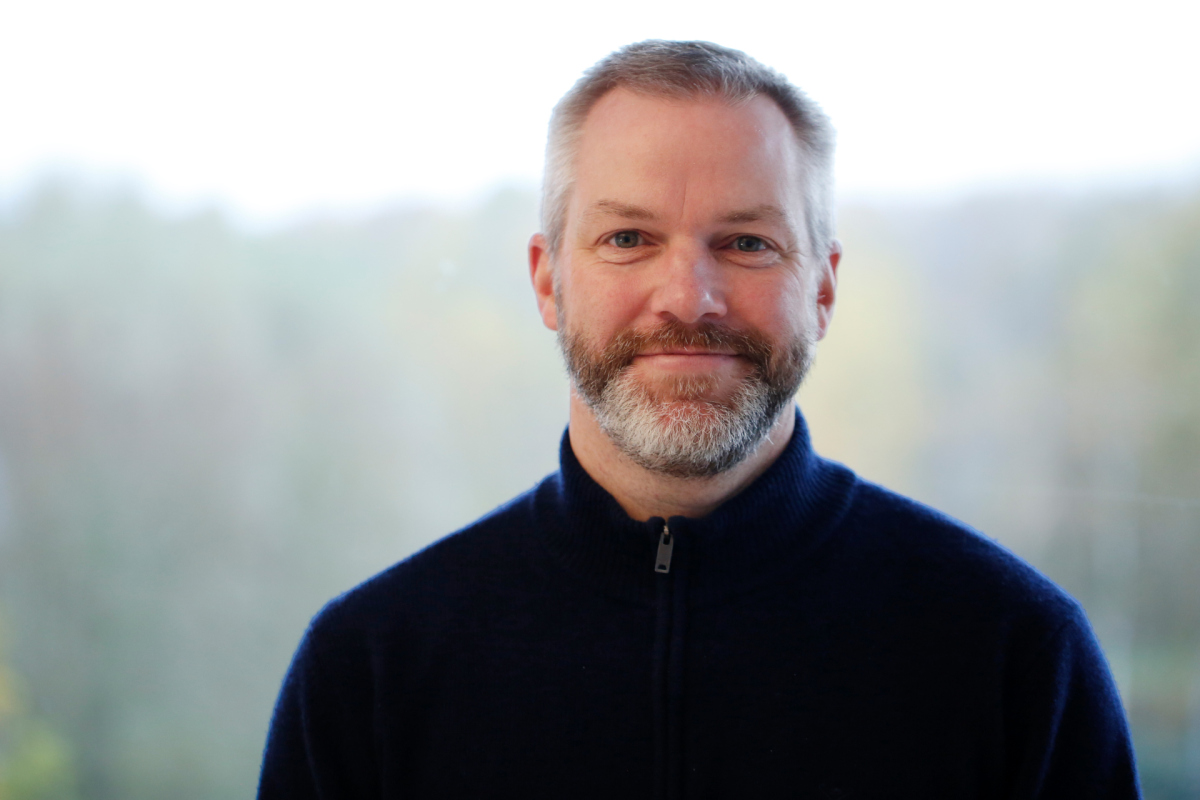
Technician
HGF MPG Joint Research Group for Deep-Sea Ecology and Technology
MPI for Marine Microbiology
Celsiusstr. 1
D-28359 Bremen
Germany
|
Room: |
1342 |
|
Phone: |
